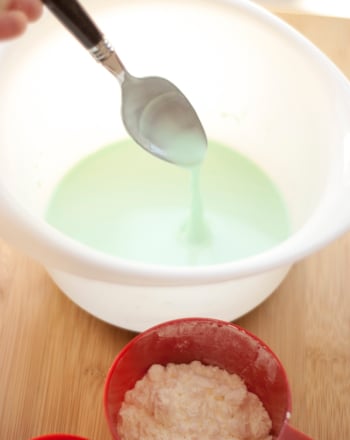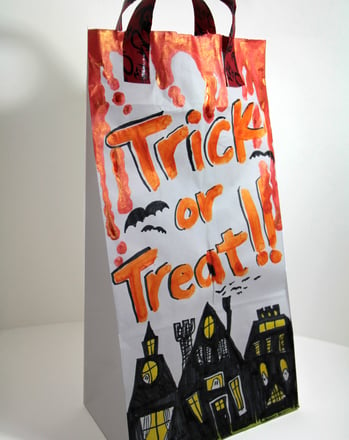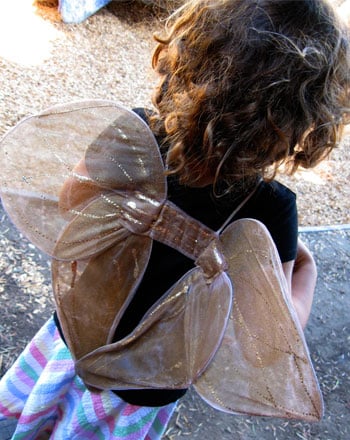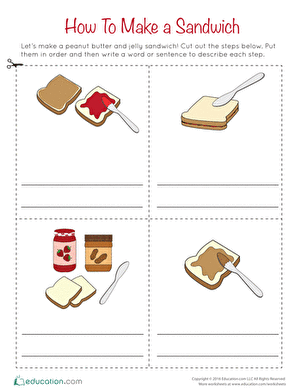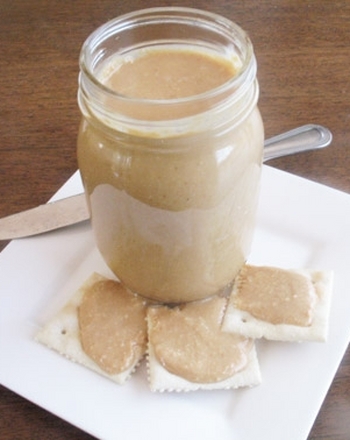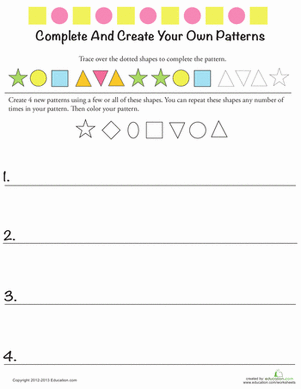Science project
Make Slime! How to Create a Colloid
It's oozy, it's goopy, and it's just plain fun. Snails make it, and slugs slide on it. It's slime!
Slime is an odd substance. It is soft and squishy like a liquid, but it sticks together like a solid. In this experiment, you'll make slime and discover what makes something a liquid or a solid. Can an object have attributes of both?
Problem:
To make a colloid—slime—out of everyday materials.
Materials:
- Guar gum
- Water
- Tablespoon
- Plate
- Stop watch
- Blender
- Paper or notebook
- Pencil
Procedure:
- Before you begin the experiment, sit down and make a list of the characteristics of solids and liquids. You can ask questions like: What do solids and liquids feel like? What can solids and liquids do? How are solids and liquids different? What would happen if you put a solid on this plate and tipped it over? What would a liquid do if I put it on this plate and tipped the plate over?
- Write your answers to the questions on a piece of paper or in a notebook.
- Examine the guar gum. Guar gum is a powder that comes from a legume called the guar bush. It's used in ice cream and other foods as a thickener. If you have a health food store nearby, you'll often find guar gum there.
- Make sure you have dry hands. Take out a tablespoon of guar gum and touch it. What does it feel like? Write down any notes on your paper or in your notebook.
- Put a tablespoon of guar gum at one end of the plate.
- Take out the stopwatch, and start the timer.
- Now, tip the plate so that the guar gum moves down the plate, and see how long it takes for the guar gum to move from one end to the other.
- Observe how it moves. Ask questions such as: How long did it take to move down the plate? Where did it land? How did it move? Write down your answers.
- Grab a tablespoon of water. Touch it. What does it feel like? Write down your answer.
- Place the water on one side of the plate, tip the plate, and ask the same questions. What happens this time? Jot down your notes.
You've explored your two materials. One is a solid and one is a liquid. They feel very different. They move differently too. Now, to make some slime!
- Combine a cup of water and half a tablespoon of guar gum in the blender.
- Think about what you learned about these substances: What will happen when they combine? What happens when solids go into liquids? Can you think of any examples, such as sand and water? How do they mix?
- Write down what you think will happen in your notebook. This guessing is called a hypothesis.
- Blend the guar gum and the water together and spoon it out onto the plate. Touch it. What does your slime feel like? Put the guar gum mass onto one side of the plate, and tip the plate again. How long does it take to move down the plate? How does it move? Write down your notes.
Results:
When you touched the guar gum with dry hands, it felt dry and dusty. You could blow it off your fingers and it would fly away in the air. When you put it on a plate, it just sits there. If you tip the plate, it will blow away and may land in a pile at the bottom of the plate.
When you touched the water, it was wet! Water is a liquid. It moves around your fingers as they move. If you move the glass and put it on the plate, then tip the plate, the water moves down the plate very quickly.
The slime that you've made is very different from its parent ingredients. It acts like jelly, oozing slowly down the plate. It feels wet, but it doesn't move like water. It's a combination of a solid and a liquid.
Why?
What is this slimy thing that you made? You've just made a colloid, a substance that is dispersed evenly through another substance. In this case, the water and the guar gum combine to make something that's very different from its parent ingredients. Now you have a mass that has the characteristics of both a solid and a liquid. It is wet, and it slides quickly, but it moves much more slowly than water!
Can you think of anything else that looks or acts like a solid and a liquid at the same time?
What do you think would happen if you added more water to the mix? Could you add more guar gum? Would the slime feel and act the same?
Experiment with your slimy creations. Soon, you'll be a master of the colloid!
Education.com provides the Science Fair Project Ideas for informational purposes only. Education.com does not make any guarantee or representation regarding the Science Fair Project Ideas and is not responsible or liable for any loss or damage, directly or indirectly, caused by your use of such information. By accessing the Science Fair Project Ideas, you waive and renounce any claims against Education.com that arise thereof. In addition, your access to Education.com's website and Science Fair Project Ideas is covered by Education.com's Privacy Policy and site Terms of Use, which include limitations on Education.com's liability.
Warning is hereby given that not all Project Ideas are appropriate for all individuals or in all circumstances. Implementation of any Science Project Idea should be undertaken only in appropriate settings and with appropriate parental or other supervision. Reading and following the safety precautions of all materials used in a project is the sole responsibility of each individual. For further information, consult your state's handbook of Science Safety.



